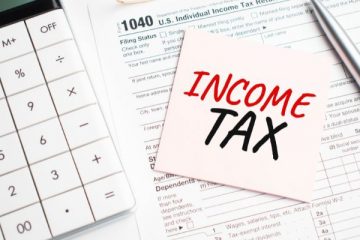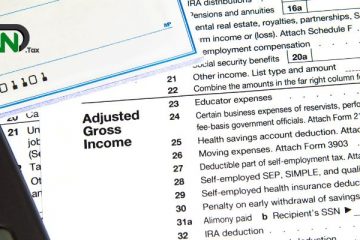The Employee Retention Tax Credit (ERTC) is a refundable tax credit for businesses that paid qualified wages to employees during the COVID-19 pandemic. The credit is equal to 50% of qualified wages paid in 2020 and 70% of qualified wages paid in 2021. The maximum credit amount is $10,000 in a quarter.
The Employee Retention Credit (ERC / ERTC) is a significant tax credit for businesses that paid qualified wages to employees during the COVID-19 pandemic. The credit can help businesses to:
- Retain employees: The ERC can help businesses to keep their employees on the payroll, even if they are not working full-time. This can help protect businesses from the pandemic’s financial impact and ensure that employees have jobs to return to when the economy recovers.
- Reduce payroll taxes: The ERC can also reduce payroll taxes. This can help businesses save money and make their operations more efficient.
The ERC is a valuable tax credit that can help businesses to weather the storm of the COVID-19 pandemic. If you are a business that paid qualified wages to employees during the pandemic, you should consider claiming the ERC.
Table of Content
Understanding Employee Retention Tax Credit (ERTC)
Eligibility Criteria
The ERC is a refundable tax credit for businesses that paid qualified wages to employees during the COVID-19 pandemic. The credit is equal to 50% of qualified wages paid in 2020 and 70% of qualified wages paid in 2021. The maximum credit amount is $10,000 in a quarter.
To qualify for the ERC/ERTC, businesses must meet one of two tests:
- The Gross Receipts Test: Businesses must have experienced a 50% decline in gross receipts in a quarter compared to the same quarter in 2019.
- The Government Orders Test: Businesses must have had their operations fully or partially suspended due to a government order related to COVID-19.
The COVID-19 pandemic has made it easier for businesses to qualify for the ERC under both tests. For example, the Gross Receipts Test has been relaxed to allow companies to train with a 20% decline in gross receipts. Additionally, businesses deemed essential during the pandemic may still qualify for the ERC under the Government Orders Test if they were partially suspended due to a government mandate.
If you are a business that paid qualified wages to employees during the COVID-19 pandemic, you should consider claiming the ERC. The ERC can help you to retain employees and to reduce payroll taxes.
Calculation of Employee Retention Tax Credit
The Employee Retention Tax Credit equals 50% of qualified wages paid in 2020 and 70% in 2021. The maximum credit amount is $10,000 in a quarter.
The calculation of the ER Tax Credit is as follows:
ERC = (50% or 70%) * Qualified Wages
Where:
- ERC = Employee Retention Credit
- Qualified Wages = Wages paid to employees who were retained during the COVID-19 pandemic
Interaction with Other COVID-19 Relief Programs
The Employee Retention Tax Credit (ERTC) can be claimed in addition to other COVID-19 relief programs, such as the Paycheck Protection Program (PPP) and Economic Injury Disaster Loans (EIDLs). However, there are some limitations and considerations to keep in mind.
- PPP Loan Interaction: Wages used to claim the ERC cannot be used for PPP loan forgiveness. If you received a PPP loan, you must track which wages were used to pay for which expenses.
- EIDL Interaction: Businesses that received a Shuttered Venue Operators Grant are not eligible to claim the ERC. This is because the Shuttered Venue Operators Grant is considered a form of government assistance, and the ERC cannot be claimed in conjunction with other forms of government assistance.
It is essential to carefully review the interaction between the ERC and other COVID-19 relief programs to ensure you correctly claim all available benefits while avoiding double-dipping. Employers should consult with a tax professional to determine the best course of action for their specific situation.
Employee Retention Tax Credit Deadlines
Can you apply for ERTC in 2023?
Is it still possible to apply for the ERC in 2023? Yes, even though the ERC officially ended in 2021, eligible small business owners still have the opportunity to claim and apply for the Employee Retention tax credit in 2023. Businesses that didn’t claim the credit in 2020 and 2021 can do so retroactively by filing an amended quarterly tax return using IRS Form 941-X. Once the form is filed for each qualifying quarter, the IRS will process the return and issue a refund by check for the amount of the credit due to the business. However, knowing ERC deadlines for filing these amended tax returns is crucial to ensure companies get all the money they are entitled to.
What is the deadline for the 2020 ERC qualifying period?
If businesses still need to claim their quarterly tax returns in 2020, they can do so by completing form 941-X and submitting it to the IRS. The deadline to complete and submit these claims for the 2020 Employee Retention Tax Credit (ERTC) is April 15, 2024. To be eligible for the credit, businesses must have paid employees during the qualifying period of March 13, 2020, through December 31, 2020. Companies may claim a credit of up to $5,000 per employee for the year if qualified.
What is the ERC (Employee Retention Credit) deadline for qualifying period in 2021?
Businesses that didn’t claim the credits on their quarterly tax returns for 2021 can file amended returns and receive this credit as a refund. The deadline to complete and submit claims for the 2021 ERC is April 15, 2025.
The qualifying period for ERC in 2021 is as follows:
- For most businesses, it spans from January 1, 2021, through September 30, 2021.
- However, businesses classified as recovery startup businesses may be eligible to claim ERC for the fourth quarter, which covers the period from October 1, 2021, through December 31, 2021.
Additionally, businesses that paid wages to employees during these qualifying periods may be eligible to claim a credit of up to $7,000 per employee per quarter.
What is the deadline for an ERC application with third-party ERC companies?
Due to the complexities involved in filing amended quarterly tax returns, business owners who prefer to enlist the services of reputable third-party ERC funding companies to manage their ERC claims must be aware of the submission timelines.
Typically, when you collaborate with an ERC company, the process may take around one week to verify your documentation, prepare your amended return, collect your signatures, and submit the claim to the IRS. However, some ERC companies might require several weeks or even longer to ensure the accurate completion and processing of your amended tax returns.
It is crucial to take your time to ensure timely and timely opportunities for receiving your refund. Make it a priority to discuss all deadlines, from the application submission to providing the necessary documentation for ERC calculations with the third-party company of your choice. Doing so can ensure a smooth and timely process for your ERC claim.
Read more on: Child Tax Credit for US Expat
What is an ERC Loan?
Don’t want to wait a year or longer to receive your Employee Retention Tax Credit (ERTC) refunds from the IRS? Good news! There’s now a faster solution that business owners are turning to. Introducing ERC loans is a convenient way to gain quick access to capital without meeting the traditional requirements of a small business loan. In this post, we’ll delve into what ERC loans are and how they can benefit your business. Additionally, we’ll present our top six recommendations for ERC loan providers, enabling you to get an advance on your ERC refund without any delays.
Our team has thoroughly assessed numerous lenders and ERC companies to pinpoint the best options for ERC advances. We considered various factors, such as fees, processing times, the application process, user reviews, and more, to identify the top ERC loans in 2023. Keep reading to explore these accelerated solutions for your business’s financial needs.
5 Best ERC Loans
- Omega Funding Solutions: Omega Funding Solutions is a division of Omega Accounting Solutions, a leading provider of ERC services. Omega Funding Solutions offers ERC loans with competitive interest rates and terms. The company also has a fast approval process, so you can quickly get the necessary funds.
- Stenson Tamaddon: Stenson Tamaddon is a tax credit consulting firm that offers ERC loans. Stenson Tamaddon has a long track record of helping businesses claim their expertise backs the ERC and the company’s loans.
- Biz2Credit: Biz2Credit is a leading online lender that offers ERC loans. Biz2Credit has a wide range of loan products, and the company’s loans are available to businesses of all sizes.
- United Capital Source: United Capital Source is a private lender that offers ERC loans. United Capital Source has a fast approval process, and the company’s loans are available to businesses with good credit.
- Valiant Capital: Valiant Capital is a private lender that offers ERC loans. Valiant Capital has a long track record of helping businesses get the funding they need, and the company’s loans are available to businesses of all sizes.
Summing Up
Act now to claim your Employee Retention tax credit while there’s still time. Only wait until the eleventh hour, as obtaining your refund involves several essential steps. You’ll need to determine your eligibility for the ERC, gather all the necessary documentation, calculate the precise amount you’re entitled to, and complete Form 941-X. Grant yourself ample time to tackle these tasks to ensure a smooth process.
Procrastination may lead to rushed actions, increasing the risk of errors. Such mistakes could cause processing delays or even an inaccurate ERC refund. Hence, it’s crucial to proceed immediately. Begin the process as early as possible, ensuring your return reaches the IRS before the deadlines. This way, you can safeguard your chances of receiving the rightful Employee Retention credit without any unnecessary hurdles.
Frequently Asked Questions
What is the Employee Retention Tax Credit?
The Employee Retention Credit (ERC) is a refundable tax credit for employers established by the Coronavirus Aid, Relief, and Economic Security (CARES) Act. Its purpose is to financially relieve businesses during the coronavirus pandemic by offsetting employment taxes. The ERC serves a dual function, as it helps employers manage their operational costs while encouraging job retention.
Are the ERC and the ERTC the same thing?
The ERC (Employee Retention Credit) and ERTC (Employee Retention Tax Credit) refer to the identical employer tax credit. The terms ERC and ERTC are used interchangeably to represent this credit.
Who is eligible for the employees’ retention credit?
To qualify for the Employee Retention Credit (ERC), an employer must meet one of the following criteria:
1. Experienced a substantial decline in gross receipts during 2020 and/or 2021.
2. Had their operations fully or partially suspended in 2020 and/or 2021 due to a government mandate.
What constitutes a full or partial suspension of operations?
To qualify for the Employee Retention Credit (ERC), a business must experience limited commerce, travel, or group meetings due to COVID-19, as directed by an order, proclamation, or decree issued by a federal, state, or local government. Furthermore, the business must demonstrate that the impact of the government order was more than nominal. This entails meeting one of the following criteria:
1. The gross receipts for the suspended portion of the business must represent at least 10% of the total gross receipts. OR
2. The employer hours for the suspended portion of the company must account for at least 10% of the total employee service hours.




